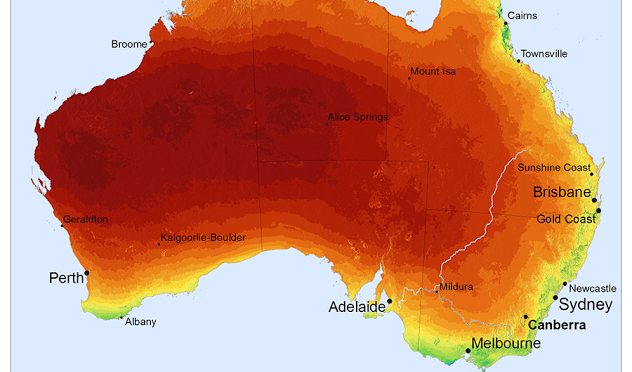A collaborative research study has shown energy derived from concentrating solar thermal power (CST) can be a cost-effective solution to augmenting Australia’s power grid, saving almost a $1b in network investment.
A collaborative research study has shown energy derived from concentrating solar thermal power (CST) can be a cost-effective solution to augmenting Australia’s power grid, saving almost a $1b in network investment.
With electricity prices rising steeply across the country, the study reveals that CST plants, which provide large-scale energy storage, could reduce the need for new electricity poles and wires and help cut consumer energy bills. At the same time, using CST plants in the national grid could provide a pathway to significant investment in CST in Australia.
The study examined the benefits of installing CST at key points in electricity networks where major network investment is planned to cope with growth in demand or with problems with voltage.
The Australian Solar Thermal Energy Association (AUSTELA) led the research collaboration that included the University of Technology, Sydney’s Institute for Sustainable Futures (ISF), the University of NSW, and Queensland-based Ergon Energy.
With funding provided by the Australian Renewable Energy Agency (ARENA), AUSTELA and Ergon, additional support came in the form of essential data from seven power network companies operating in the National Electricity Market.
AUSTELA Chair Andrew Want said the study builds on recent Australian research confirming the value and potential of CST in Australia, and while CST had been in commercial operation at large scale overseas for more than 20 years, with plants as large as 377MW now in operation, the lack of a grid-connected CST plant in Australia impeded investment in our market.
Unlike other forms or renewable energy CST offers large-scale energy storage and can play a uniquely beneficial role in network operation.
“Studies continually show, and this study provides further confirmation, that concentrating solar thermal power has an important and valuable role to play in Australia’s electricity system of the future. But for these benefits to be realised and necessary investment attracted, we must demonstrate CST technology in our national network,” Mr Want said.
“It is inevitable we will change the way we plan, generate and deliver energy to consumers – this has already begun, with wind power and solar PV driving the change and CST has an important contribution to make in meeting our future power needs.”
Network investment to deal with peak demand growth in Australia has been largely responsible for electricity price rises over the past five years and continued investment in the same manner is not economically sustainable according to ISF researcher Jay Rutovitz.
“In planning upgrades to our electricity networks we need reliable and accessible information on hand for government and business decision makers to make the right long-term choices about where money will be spent,” Ms Rutovitz said.
“This study shows CST could be a viable alternative to traditional network augmentation in more than 70 per cent of the cases examined. It also identified how $0.8 billion could be saved from network investment and how 533 mega watts of cost effective CST power could alleviate constrained grid locations in the next ten years. This would reduce greenhouse emissions by an estimated 1.9 million tonnes per year.”
“Ergon Energy’s Development Manager Andrew Nelson said ,“Ergon Energy’s objective is to ensure our customer needs for a safe, reliable and affordable supply are met through the deployment of the most cost effective and efficient solutions available.
“In some cases this will involve putting energy storage and generation (including renewable) on the end of long and constrained power lines instead of duplicating the existing line at a higher cost.
“Our objective is to put downward pressure on network charges to help drive the economy.”
“This collaboration of stakeholders has shown that energy network data needs to be harmonised and made more accessible to better guide scenario modelling for future energy planning. Network providers and renewable energy developers have much to gain by working together closely,” Ms Rutovitz said.
Concentrated Solar Power, Concentrating Solar Power, CSP, Concentrated Solar Thermal Power, solar power, solar energy, Australia, AUSTELA,


